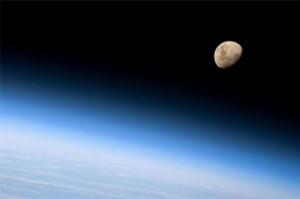Ru
|
Eng
Belarusian State University’s space module delivered to ISS
11.12.2014

A spaceborne video spectrum system of the Belarusian State University has been delivered to the International Space Station, the university’s press service told BelTA.
The equipment was delivered to the International Space Station by a cargo rocket Progress M-25M. The equipment has already been assembled and tested. The equipment is now being used in normal mode as part of the space experiment Hurricane, which is meant to study processes and consequences of natural and man-caused phenomena and catastrophes.
Scientists of the Aerospace Research Department of the A.N. Sevchenko Applied Physics Institute of the Belarusian State University were the ones to develop the optical scheme, technical parameters, and the research apparatus. The process was supervised by head of the department, Professor Boris Belyayev.
Developed by the Belarusian State University, the spaceborne video spectrum system is meant to take digital color photos of the Earth with a high spatial resolution while recording multiple spectral parameters of the radiation reflected by earth surfaces. The equipment will allow monitoring the ecological situation, analyzing the state of air above cities, detect anthropogenic emissions of industrial enterprises, track the movement and spread of salt storms and the snow cover above large cities. Apart from that, the device will also track the unfavorable impact of the oil industry on the environment and detect forest fires.
The source noted that Belarusian State University scientists take an active part in the implementation of various space experiments. In June 2010 a photo spectrum system developed by the Aerospace Research Department of the Applied Physics Institute of the Belarusian State University for the Hurricane program was installed on board of the International Space Station. The system operates well and is used by every Russian expedition on board of the station. A number of external sensors were developed in 2011 for the sake of carrying out a seismic forecast experiment that monitors forerunners of emergencies.
The equipment was delivered to the International Space Station by a cargo rocket Progress M-25M. The equipment has already been assembled and tested. The equipment is now being used in normal mode as part of the space experiment Hurricane, which is meant to study processes and consequences of natural and man-caused phenomena and catastrophes.
Scientists of the Aerospace Research Department of the A.N. Sevchenko Applied Physics Institute of the Belarusian State University were the ones to develop the optical scheme, technical parameters, and the research apparatus. The process was supervised by head of the department, Professor Boris Belyayev.
Developed by the Belarusian State University, the spaceborne video spectrum system is meant to take digital color photos of the Earth with a high spatial resolution while recording multiple spectral parameters of the radiation reflected by earth surfaces. The equipment will allow monitoring the ecological situation, analyzing the state of air above cities, detect anthropogenic emissions of industrial enterprises, track the movement and spread of salt storms and the snow cover above large cities. Apart from that, the device will also track the unfavorable impact of the oil industry on the environment and detect forest fires.
The source noted that Belarusian State University scientists take an active part in the implementation of various space experiments. In June 2010 a photo spectrum system developed by the Aerospace Research Department of the Applied Physics Institute of the Belarusian State University for the Hurricane program was installed on board of the International Space Station. The system operates well and is used by every Russian expedition on board of the station. A number of external sensors were developed in 2011 for the sake of carrying out a seismic forecast experiment that monitors forerunners of emergencies.
SCIENCE. TECHNOLOGY. INNOVATIONS
13.08.2024
28.06.2024
28.06.2024
25.06.2024
05.06.2024
15.05.2024
15.05.2024
26.04.2024
26.04.2024
26.04.2024













